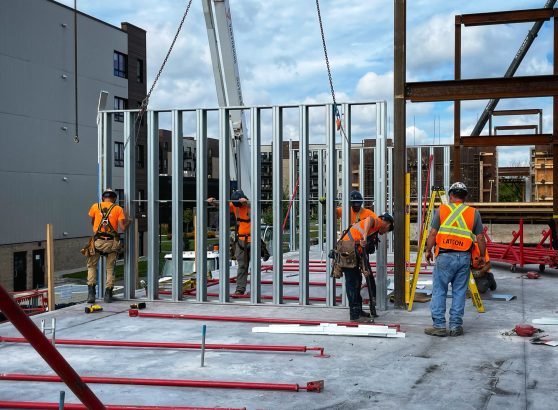Elevating Design Possibilities: Prefab Wall Panels Bring Innovation to Architecture

When it comes to architecture and design, innovation is always at the forefront of creating unique and functional spaces. One such innovation that is revolutionizing the way buildings are constructed is the use of prefab wall panels. These panels are pre-manufactured in a factory setting and then transported to the construction site for installation. This method not only speeds up the construction process but also brings a new level of design possibilities to architects and designers.
Prefab wall panels come in a variety of materials, including wood, metal, and concrete, allowing for flexibility in design and aesthetics. These panels can be customized to fit the specific needs of a project, whether it's creating a sleek and modern look with metal panels or a warm and inviting feel with wood panels. The ability to choose from a range of materials gives architects the freedom to explore different design options and create truly unique spaces.
One of the biggest advantages of using prefab wall panels is the precision and consistency they offer. Because the panels are manufactured in a controlled environment, they are built to exact specifications, ensuring a perfect fit when they are installed on-site. This level of precision not only saves time during the construction process but also reduces waste and minimizes errors, leading to a more efficient and cost-effective building process.
Additionally, prefab wall panels can be designed to include built-in features such as insulation, wiring, and plumbing, further streamlining the construction process. By incorporating these elements into the panels themselves, builders can significantly reduce the amount of time spent on-site installing these systems separately. This not only saves time but also helps to improve the overall quality and performance of the building.
Another benefit of using prefab wall panels is their sustainability. By manufacturing the panels in a factory setting, builders can optimize the use of materials and reduce waste. Additionally, because the panels are built to exact specifications, there is less need for on-site modifications, further minimizing waste and environmental impact. This focus on sustainability is becoming increasingly important in the world of architecture, and prefab wall panels offer a way to create more eco-friendly buildings without sacrificing design or functionality.
From a design perspective, prefab wall panels open up a world of possibilities for architects and designers. The ability to customize the panels to fit the specific needs of a project allows for greater creativity and innovation in design. Whether it's creating intricate patterns and textures with concrete panels or incorporating sustainable materials into the design, prefab wall panels offer endless opportunities to push the boundaries of architecture.
Furthermore, prefab wall panels can also be used to create unique and eye-catching facades for buildings. By combining different materials, colors, and textures, architects can design striking exteriors that stand out in their surroundings. This ability to create visually interesting facades adds another layer of depth and character to a building, making it more engaging and memorable for those who experience it.
Overall, prefab wall panels are changing the way buildings are constructed and designed. Their versatility, efficiency, and sustainability make them an attractive option for architects and builders looking to elevate their projects to new heights. By embracing the innovation that prefab wall panels offer, designers can create truly unique and inspiring spaces that push the boundaries of traditional architecture. As the demand for more efficient and sustainable building practices grows, prefab wall panels are poised to become an essential tool in the toolkit of modern architects and designers.